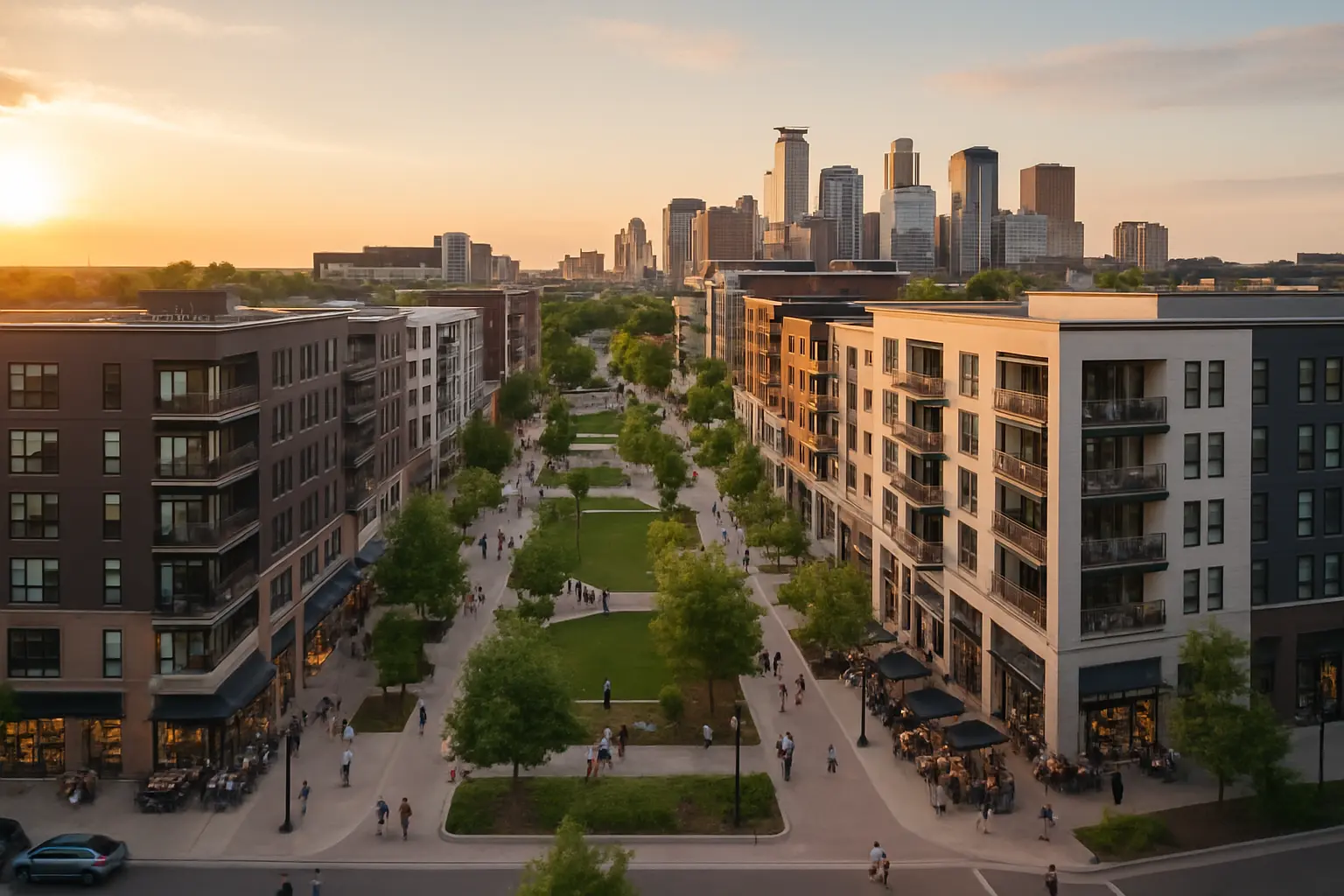The Rise of Mixed-Use Developments: Twin Cities' Urban Evolution
How innovative commercial-residential spaces are reshaping communities from Minnetonka to Woodbury and transforming the way we live and work.

The Growing Appeal of Live-Work-Play Communities
The Twin Cities metropolitan area is experiencing a remarkable transformation as mixed-use developments reshape the urban landscape. These innovative spaces are revolutionizing how residents experience their communities, offering a seamless integration of living, working, and recreational opportunities all within walking distance.
Recent surveys indicate that over 65% of Twin Cities residents prefer communities that offer convenient access to amenities, highlighting the growing demand for mixed-use developments. These modern urban hubs are particularly appealing to both millennials and empty nesters seeking vibrant, walkable neighborhoods.
Benefits of Integrated Communities
- Reduced commute times and decreased reliance on personal vehicles
- Enhanced community engagement through shared spaces and local events
- Improved work-life balance with convenient access to necessities
- Environmental sustainability through efficient land use and reduced carbon footprint
Strategic Locations Leading the Trend
Across the Twin Cities, several locations have emerged as pioneers in mixed-use development. Maple Grove has transformed its downtown area into a thriving community hub, while Eden Prairie continues to expand its mixed-use footprint with innovative projects that combine retail, office space, and luxury apartments.
Mixed-use developments are not just buildings; they're carefully crafted ecosystems that foster community connection and economic growth.
Success Stories
In Bloomington, the South Loop District exemplifies successful mixed-use development, featuring premium residential units, Class A office space, and diverse dining options. Meanwhile, Woodbury's CityPlace has become a model for suburban mixed-use developments, demonstrating how thoughtful planning can create vibrant community centers outside the urban core.
Investment Opportunities and Market Analysis
The financial outlook for mixed-use developments in the Twin Cities remains robust, with property values in these areas consistently outperforming traditional single-use developments. Investors are particularly attracted to the diversified revenue streams and reduced market risks associated with mixed-use properties.
Key Investment Indicators
- Higher occupancy rates compared to single-use properties
- Strong rental premium potential for both residential and commercial spaces
- Increased property value appreciation due to community amenities
- Stable cash flow from diverse tenant mix
Future of Twin Cities Real Estate
The future of real estate in the Twin Cities is increasingly centered around sustainable, walkable communities. Developers are incorporating smart technology, green building practices, and community-focused amenities to create spaces that meet the evolving needs of residents and businesses alike.
Emerging Trends
New developments are emphasizing features such as:
- Integration of public transportation hubs
- Incorporation of green spaces and walking trails
- Implementation of smart building technology
- Focus on health and wellness amenities
As the Twin Cities continue to grow, mixed-use developments are playing a crucial role in creating sustainable, livable communities that support economic growth while maintaining the region's high quality of life. These innovative spaces are not just changing where people live and work – they're fundamentally transforming how communities interact and thrive.


